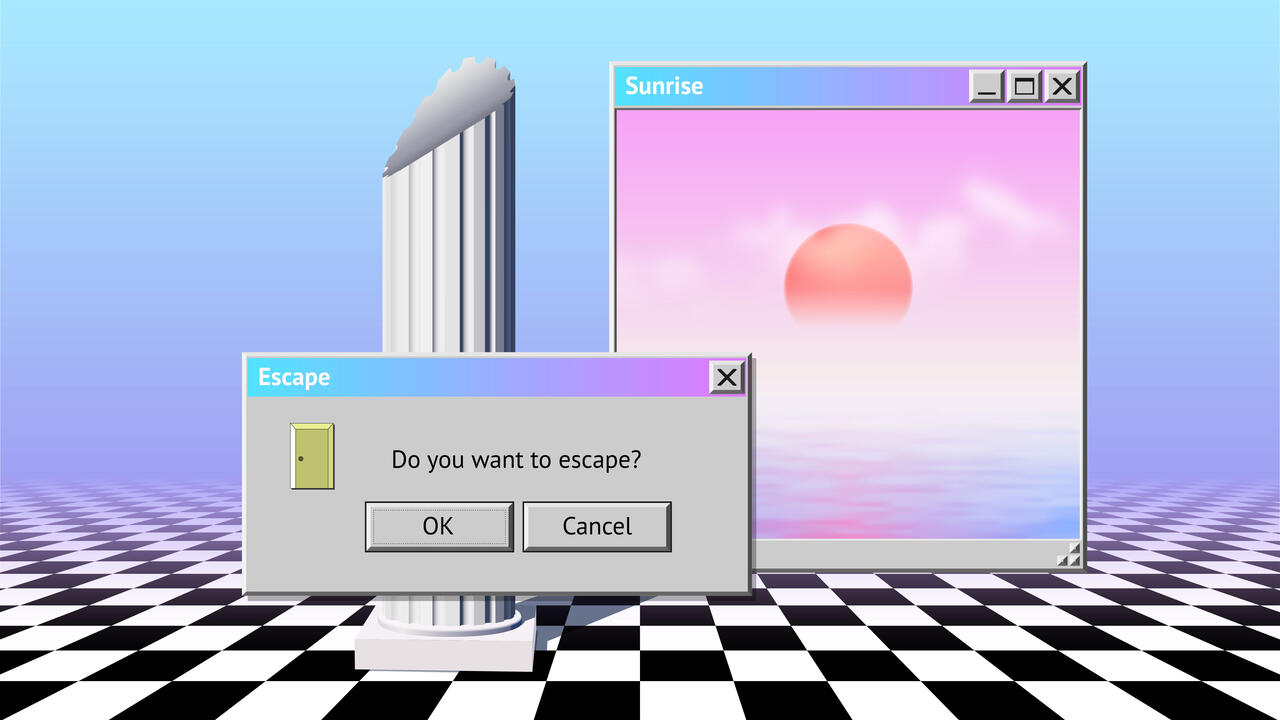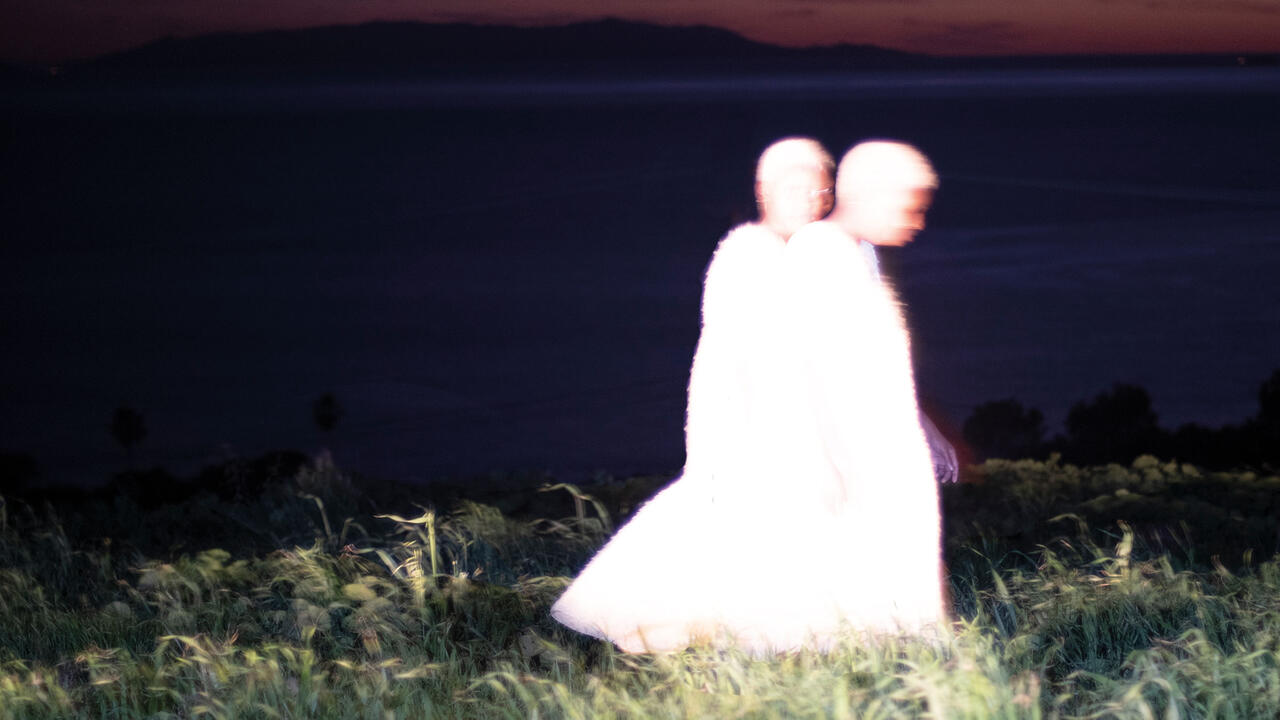When The Light Shifts
Rebecca Warren lines up a parade of pagan bronzes for Tate St Ives’s newly opened gallery
Rebecca Warren lines up a parade of pagan bronzes for Tate St Ives’s newly opened gallery

In Luis Buñuel’s surrealist 1962 film The Exterminating Angel (audaciously realized by Thomas Adès as an opera last year), guests at a dinner party retire to the music room; when the morning comes, they discover that, inexplicably, they cannot leave, and this strange psychological menace swoops the crowd into a raw state of anarchy. The Exterminating Angel has been a deeply influential work for British artist Rebecca Warren over the years, and I sense that same dark comic essence in the mad family of sculptures she’s lined up for her show ‘All That Heaven Allows’, which marks the opening of a new gallery for Tate St Ives. A set of pagan bronzes standing three-metres high create a threatening ring that dominates the space. Here, Warren assembled levels of clay, pummelled and patterned before being cast in bronze. In Aurelius, There’s No Other Way and The Three (all works 2017), the suggestion of an expression, a gesture, or posterior poke out of drools of paint.

Executive Director Mark Osterfield describes Warren’s counter-monuments as ‘the perfect activator’ for the gallery extension at the Tate’s Cornish outpost – part of a GBP£20 million redevelopment – which carves 500 square metres through a cliff-face containing hard blue Elvan rock. Since it opened in 1993 on the site of a former gasworks across from Porthmeor beach, Tate St Ives has been lamed by an inability to display its collection alongside temporary exhibitions, and has had to put up with periodic six-week closures for rehangs. The brief for Jamie Fobert Architects was to meet that need for space while also capturing the essence of St Ives’s delicate, glassy light, which bounces off the water surrounding the land’s edge into the rotunda designed by Eldred Evans and David Shalev. Jamie Fobert Architects had their work cut out for them – original proposals had to be shelved after locals pushed back against plans to block the seascape and remove car parking – and they eventually settled on a five-metre high subterranean solution which doubles the existing gallery space (and Fobert says that they’ve even increased the available car parking).

On the building’s exterior, the roof becomes a garden filled with local flora, and the cladding has been finished in hand-glazed blue-green tiling – a nice nod to Bernard Leach. But understanding this latest chapter in the institution’s story means stepping inside the brand-new extension, where the result is a beautiful, column-free chamber of light. ‘You feel the presence of this diffuse light,’ Fobert tells me. ‘It’s about volume and presence, not streams of sunlight’. The ceiling does the work here: those fishing lofts so loved by the St Ives School artists are translated into vast concrete beams, broken up by six large skylights, with enough depth so that the coastal light is properly absorbed and doesn’t wash up harshly against the walls. Fobert worked with environmental engineer Max Fordham to make sure the gallery takes in the warmer light from the south, rather than the cooler hues from the north. On the day I visit, the skyline is masked by cloud, but sunnier intervals transform the space, with light pooling and gently hanging in the centre. If there’s a downside to all this effervescence, it’s that the Evans and Shalev enfilade running into Fobert’s gallery (the original architects were also invited back to expand their half with a new ‘sky studio’ leading onto a terrace) – which houses Tate St Ives’s rich, permanent collection – may now feel like something of an odd curiosity.

But back to ‘All That Heaven Allows’, Warren’s first major UK show in eight years. Her hefty, playdough-like bronzes – ghostly gestures to Giacometti and Minnie Mouse – drilled into the concrete floor (a nerve-wracking moment for the artist, she tells me), studies in neon and pompoms galore create a contrapuntal parade of ideas across the gallery. There’s a destabilizing lightness to Warren’s work which is a perfect partner for Fobert’s architecture, and she troubles the brooding weight of steel and bronze with the zany addition of a pompom or clumsy bowtie. ‘I like to mix things up, turn things on their heads,’ she said in an interview earlier this year. In Let’s All Chant (reprise) (2017), slices of steel are given a milky-pink lick of paint and a pompom. The slabs of brushed blue-black steel of The Sea (2017) form a big punctuation mark at the gallery entrance, forcing visitors to pause for a moment, restraining the space.

I’m particularly drawn to the confident bronze ruffians of Los Hadeans (2017) – Warren’s title emphasizes their primordial qualities, with a reference to geologic time and mythology – in which ‘proto-humans rise from hell’, as she puts it. Facing them, they may be gloopy and blistered, but they also certainly know how to strike a pose. One even struts balletically. I also find myself lingering around Warren’s rarely displayed collages, in which neon curlicues, shaped after parts of the artist’s face, the curve of a cheekbone or an inverted eye, are made even stranger when mounted on cracked MDF boards alongside paper, string, and other inconsequential detritus. These quiet studies encourage an attention to your own presence, creating moments of idling between the more monumental sculptures. It’s made all the more wonderful by Warren’s decision not to cram the new gallery, to allow the beams of light to animate her stage set instead. ‘I didn’t want something too bombastic’, she says.

If back in 2006, Warren mischievously once said she wanted to create works which looked ‘like they’d been made by a sort of pervy middle-aged provincial art teacher who’d taken me over’, then one leering answer to that sits on a trolley in a corner: an ugly slob of unfired clay in dirty white, brandishing a cane, and brilliantly titled These Patriarchs (2017). With the vicious humour and gender politics set into Warren’s sculptures, under the almost religious light-play of the gallery, your sense of perception begins to shift. By the end, everything should feel slightly off, Warren says, ‘not exactly human’.
Rebecca Warren’s ‘All That Heaven Allows’ runs at Tate St Ives until 7 January 2018.
Main image: Interior of new Tate St Ives gallery by Jamie Fobert Architects, 2017. Courtesy: Tate and Jamie Fobert Architects; photograph: © Hufton+Crow





















